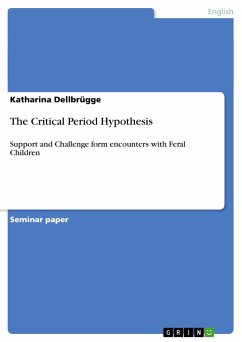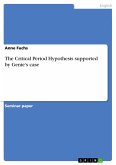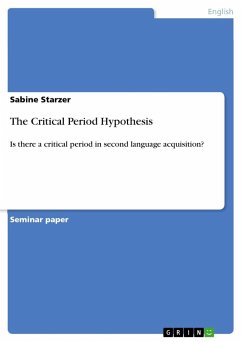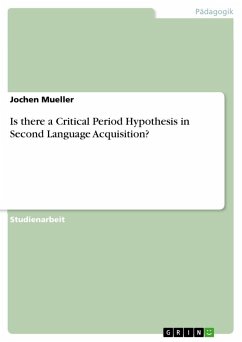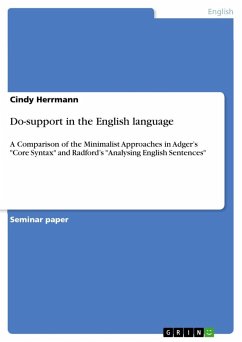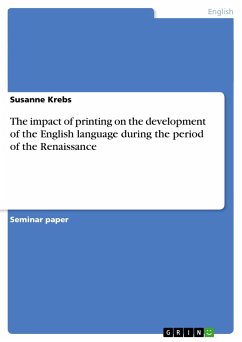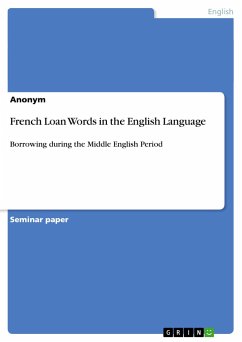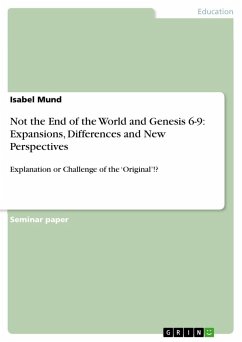Seminar paper from the year 2008 in the subject English Language and Literature Studies - Linguistics, grade: 2,5, University of Cologne (Englisches Seminar), course: The Acquisition of English, language: English, abstract: Encounters with feral children have been attracting intellectual examination and curiosity since the early seventeenth century. Among others, Anthropologists, Psychologists and Linguists hoped to find answers to central questions of mankind: What makes us human beings? What distinguishes us from animals? Nature or nurture, what has greater impact on us?In linguistics these case studies are frequently cited. Especially with respect to the assumption of maturational constraints on language acquisition, scholars tried to draw conclusions from the success or failure feral children exhibited after discovery. Respectively, they were interpreted as evidence or counter-evidence for the Critical Period Hypothesis (CPH) which postulates that language can only be acquired normally up to a certain age.This term paper is organised as follows. In Section 2 a general de-scription of critical periods is given before turning to Lenneberg's hypothesis. Section 3 focuses on two cases that are often taken as evidence for the CPH, namely Victor and Genie. Both didn't master language acquisition to a satisfactory level. Section 4, on the other hand, deals with three children who are expounded as counter-evidence for the CPH because they caught up quickly on language learning close to age seven. In both sections, after a short description of the individual experiences prior to dis-covery, a detailed account of linguistic achievements and shortcomings is presented. Section 5 will discuss the outcomes and put them into a broader scientific context by adding results of further research. Section 6 offers a preliminary conclusion, namely that cases of feral children should be included as indirect evidence but that this needs to be done carefully.

